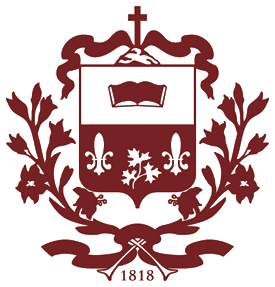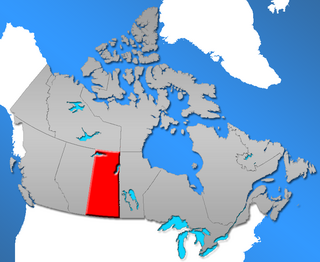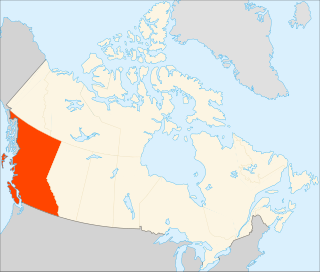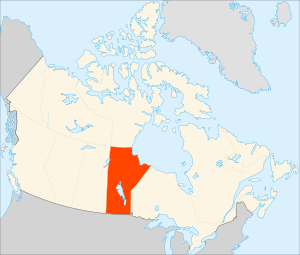
The University of Manitoba is a public research university in Winnipeg, Manitoba, Canada. Founded in 1877, it is the first university of Western Canada. Both by total student enrolment and campus area, the University of Manitoba is the largest university in the province of Manitoba. Its main campus is located in the Fort Garry neighbourhood of Winnipeg, with other campuses throughout the city: the Bannatyne Campus, the James W. Burns Executive Education Centre, the William Norrie Centre, and the French-language affiliate, Université de Saint-Boniface in the Saint Boniface ward.

Education in Canada is for the most part provided publicly, funded and overseen by federal, provincial, and local governments. Education is within provincial jurisdiction and the curriculum is overseen by the province. Education in Canada is generally divided into primary education, followed by secondary education and post-secondary. Education in both English and French is available in most places across Canada. Canada has a large number of universities, almost all of which are publicly funded. Established in 1663, Université Laval is the oldest post-secondary institution in Canada. The largest university is the University of Toronto with over 85,000 students. Four universities are regularly ranked among the top 100 world-wide, namely University of Toronto, University of British Columbia, McGill University, and McMaster University, with a total of 18 universities ranked in the top 500 worldwide.

The Université de Saint-Boniface (USB) is a French-language public university located in the Saint Boniface neighbourhood of Winnipeg, Manitoba, Canada. An affiliated institution of the University of Manitoba, the university offers general and specialized university degree programs as well as technical and professional training. In 2014, 1,368 regular students were enrolled. Its Continuing Education Division, which includes a language school, has also counted over 4,200 enrolments.

Franco-Manitobans are French Canadians or Canadian francophones living in the province of Manitoba. According to the 2016 Canadian Census, 40,975 residents of the province stated that French was their mother tongue. In the same census, 148,810 Manitobans claimed to have either full or partial French ancestry. There are several Franco-Manitoban communities throughout Manitoba, although the majority are based in either the Winnipeg Capital Region or the Eastman Region.

The University of Winnipeg is a public research university in Winnipeg, Manitoba, Canada. It offers undergraduate programs in art, business, economics, education, science and applied health as well as graduate programs. UWinnipeg's founding colleges were Manitoba College and Wesley College, which merged to form United College in 1938. The University of Winnipeg was established in 1967 when United College received its charter.

Brandon University is a university located in the city of Brandon, Manitoba, Canada, with an enrolment of approximately 3,375 (2020) full-time and part-time undergraduate and graduate students. The current location was founded on July 13, 1899, as Brandon College as a Baptist institution. It was chartered as a university by then President John E. Robbins on June 5, 1967. The enabling legislation is the Brandon University Act. Brandon University is one of several predominantly undergraduate liberal arts and sciences institutions in Canada.

University College of the North (UCN)—formerly Keewatin Community College—is a post-secondary institution located in Northern Manitoba, Canada, with two main campuses in The Pas and Thompson, respectively. UCN has a student body of approximately 2,400 annually and a staff of approximately 400.

St. John's College is an Anglican-based independent constituent college of the University of Manitoba, located on the university's Fort Garry campus in Winnipeg, Manitoba.
Assiniboine College is a Canadian college in the province of Manitoba. It is accredited by the Manitoba Council on Post-Secondary Education, which was created by the government of Manitoba.
Campus Manitoba (CMB) is a consortium of Manitoba's public post-secondary institutions intended to reduce barriers and enable the achievement of educational goals for Manitoba's student population.

Higher education in Canada includes provincial, territorial, Indigenous and military higher education systems. The ideal objective of Canadian higher education is to offer every Canadian the opportunity to acquire the skills and knowledge necessary to realize their utmost potential. It aspires to cultivate a world-class workforce, enhance the employment rate of Canadians, and safeguard Canada's enduring prosperity. Higher education programs are intricately designed with the perspective of the learner in focus, striving to mitigate risks and assure definite outcomes.

Historically, Saskatchewan's higher education system has been "significantly shaped" by demographics. In 1901, six years prior to the 1907 founding of a university in Saskatchewan, the urban population in Saskatchewan was 14,266 (16%) while the rural population was 77,013 (84%). One hundred years later, the proportions had changed significantly: urban population in 2001 was 629,036 (64%) while the rural population was 349,897 (36%). Over time the province's higher education system has changed significantly in response both to this demographic shift and to provincial politics.

Higher education in Alberta refers to the post secondary education system for the province of Alberta. The Ministry of Advanced Education in Alberta oversees educational delivery through universities, publicly funded colleges, technical institutions, and private colleges. These institutions offer a variety of academic and vocational pursuits. Students have access to post-secondary options through most regions of Alberta, and a developed articulation system allows for increased student mobility.

Higher education in British Columbia is delivered by 25 publicly funded institutions that are composed of eleven universities, eleven colleges, and three institutes. This is in addition to three private universities, five private colleges, and six theological colleges. There are also an extensive number of private career institutes and colleges. Over 297,000 students were enrolled in post-secondary institutions in British Columbia in the 2019-2020 academic year.
The Manitoba Day Award is an award presented yearly, since 2007, by the Association for Manitoba Archives which recognizes those users of archives who have completed an original work of excellence that enhances the archival community and contributes to the understanding and celebration of Manitoba history. These works can be fiction or non-fiction and can be in a variety of media, including audio and film. The deadline for nomination is normally March of each year with the award being granted in May.

Robertson College is a private Canadian career training institution headquartered in Winnipeg, Canada. Robertson has campus locations in Winnipeg, Manitoba, EdmontonCalgary, and Alberta. Robertson offers diploma and certificate programs.
Manitoba Advanced Education and Training is the department of the Government of Manitoba responsible for supporting adult learning, post-secondary education, and vocational training in Manitoba.

The following outline is provided as an overview of and topical guide to Manitoba:














